Warning: pic heavy, as usual! 
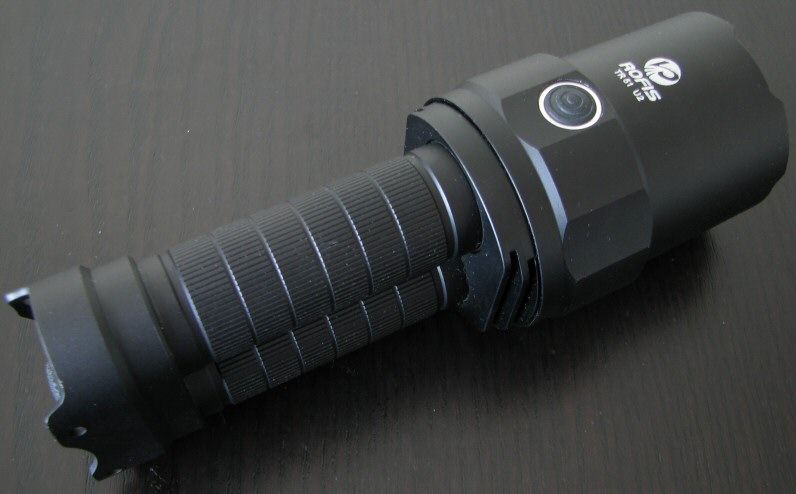
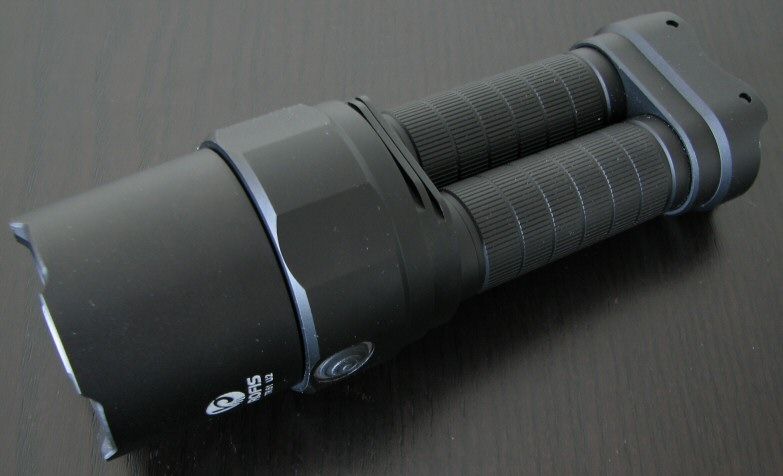
The TR51 is a new side-by-side style 2x18650, single XM-L U2 flashlight from Rofis. I have tested a number of small pocket lights from Rofis now, and the build quality, UI and circuit performance have generally been comparable to the current-controlled Fenix and Klarus lights. Let's see how this higher output model compares to other lights in this class. :wave:
Manufacturer's Specifications:
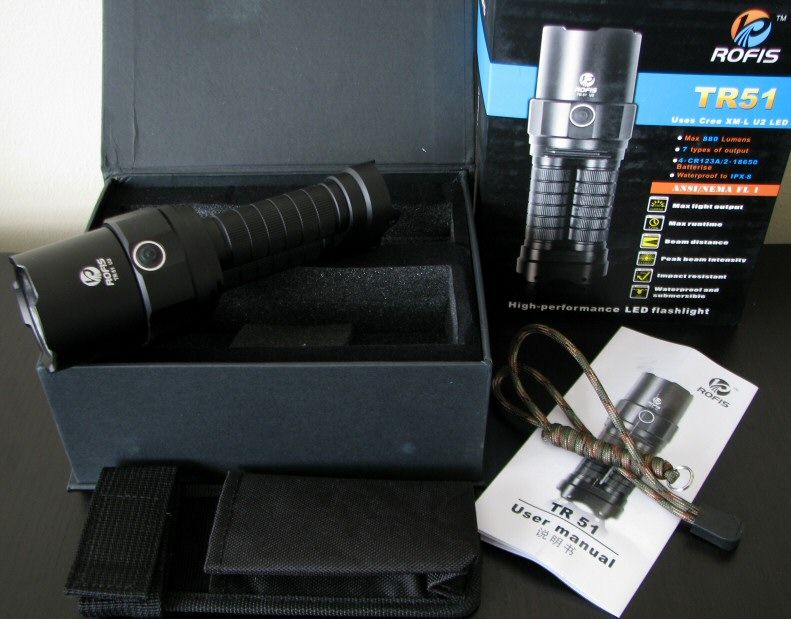
The TR51 comes in fairly standard hard cardboard box with magnetic closing flap. Inside you get a fairly typical belt-pouch carrying case, paracord-style wrist lanyard, one extra o-ring, and manual.
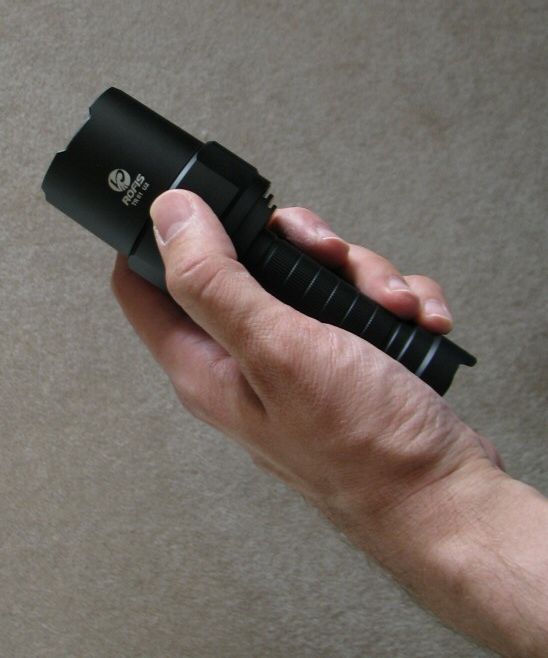

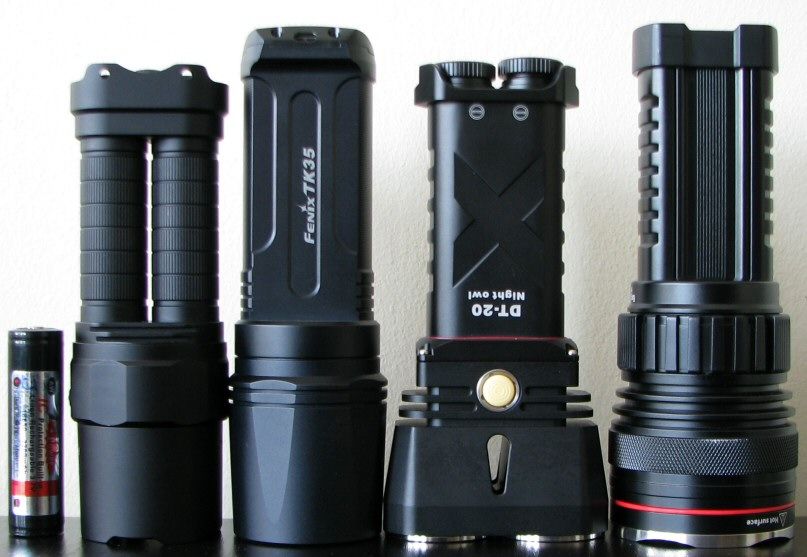
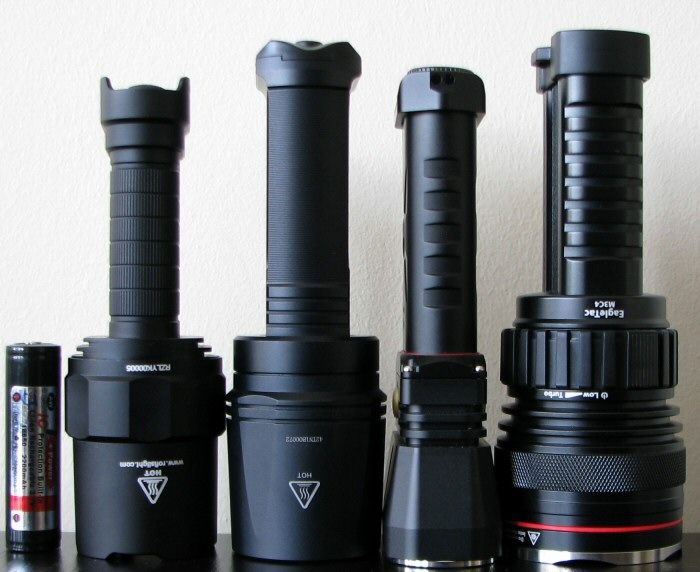
From left to right: AW 18650 2200mAh, Rofis TR51, Fenix TK35, Skilhunt DT-20, Eagletac M3C4.
All weights with no batteries installed.
Rofis TR51: Weight: 242.2g, Length: 146.7mm, Width (bezel) 45.9mm, Width (widest part): 48.1mm
Eagletac M3C4 XM-L: Weight: 348.0g, Length: 164mm, Width: 61mm (bezel)
Fenix TK35: Weight 256.1g, Length 162mm, Width (bezel): 48.6mm, Max Width 52.0mm
Skilhunt DT-20: Weight 280.0g, Length: 152mm Width (bezel): 72.8mm and 36.8mm
Sunwayman M40C: Weight: 258.5g, Length 156mm, Width (bezel) 57.1mm,
Nitecore TM11: Weight: 342.6g (476g with 8xCR123A), Length 135.3mm, Width (bezel): 59.5mm
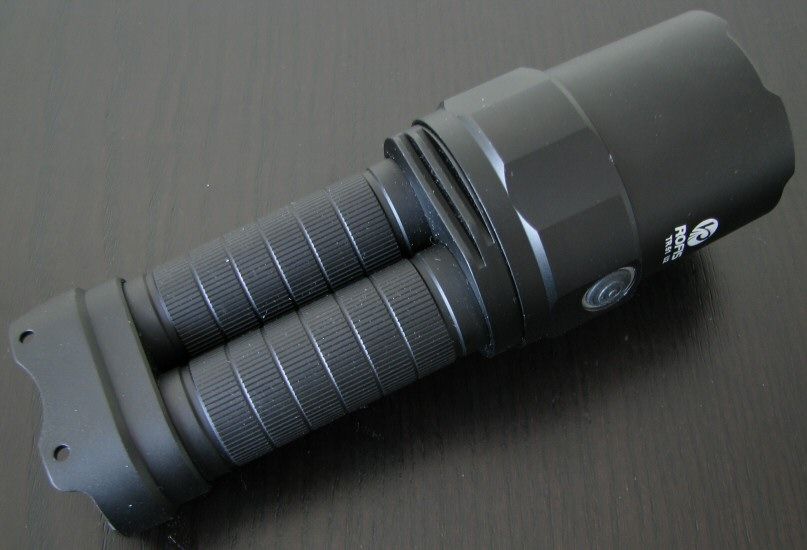
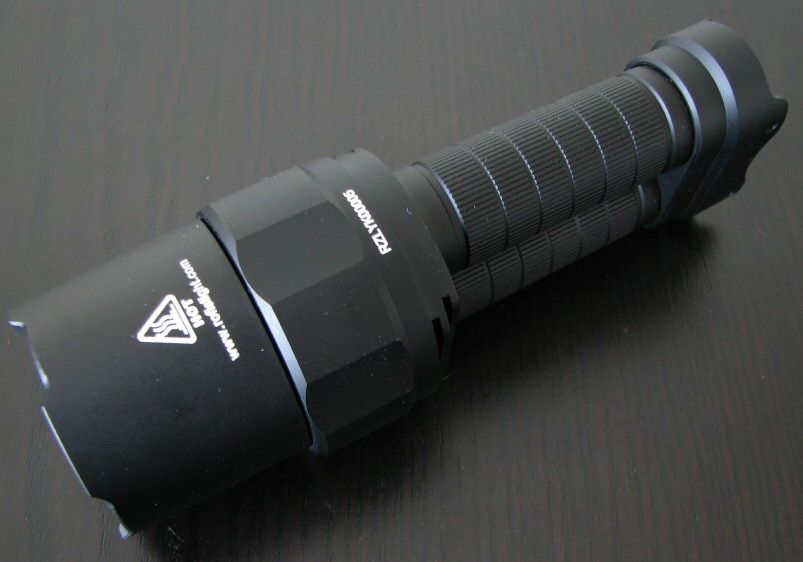
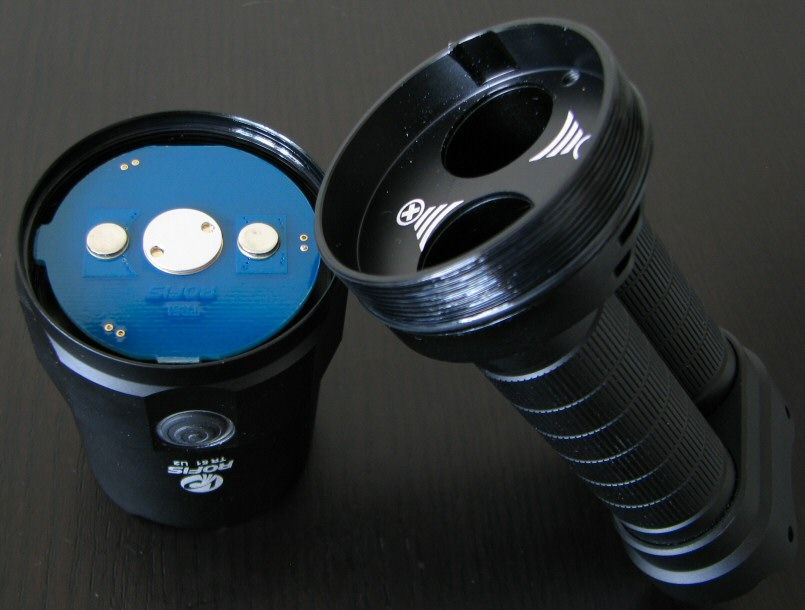
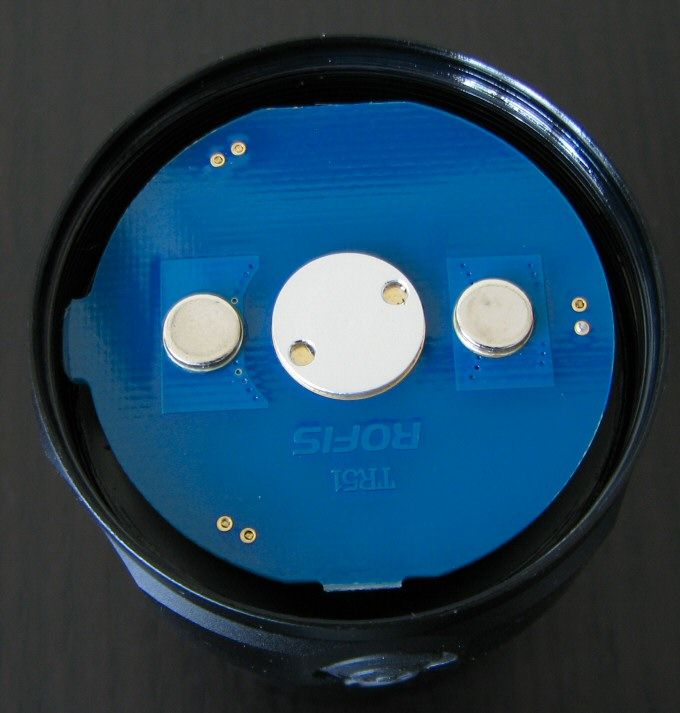

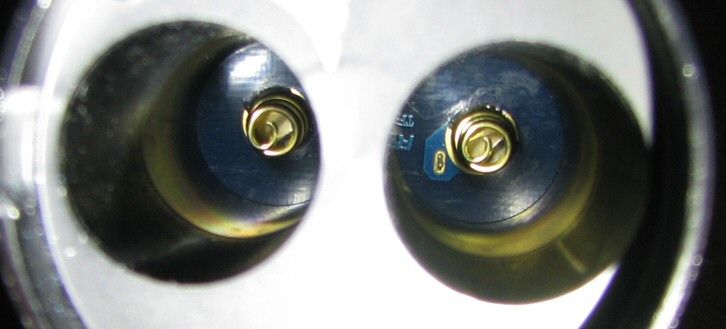
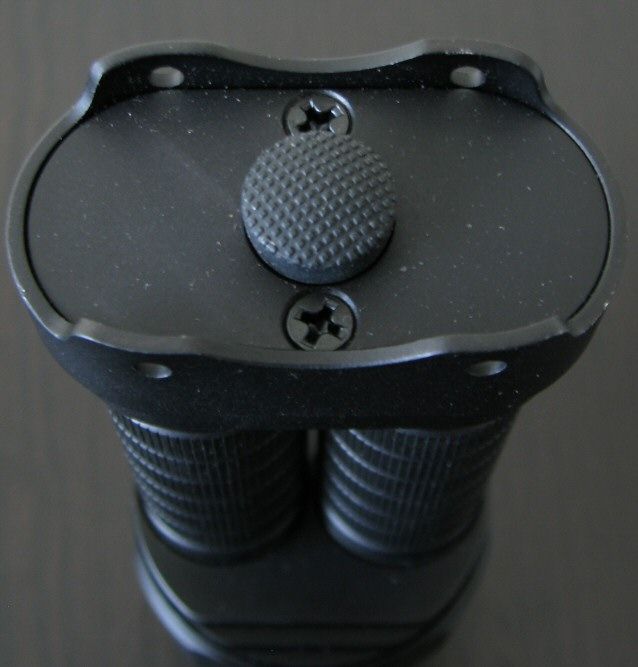
The design of the TR51 is distinctive. Although a number of makers have opted for side-by-side 2x18650 handles (e.g. Fenix TK35, Eagletac M3C4), the TR51 is different from most in that it doesn't use a battery carrier. This allows the light to be more compact than others in this space (and bonus – no carrier to worry about breaking ).
).
Anodizing is a black matte finish on my sample, with no chips or damage. Labels are clear and bright against the background. There is no real knurling to speak of on the light, but the various build elements do help with grip (there are also some fine ridges on the battery tube, similar to some Fenix lights). I supposed it could be a bit slippery if wet, but I would still consider grip to be decent overall.
Note that while all the screw threads are anodized, there is still no head lockout. As long as there is sufficient tension on the spring-mounted contact plate in the head, the light will stay on (see below for an explanation of the mechanism). In my testing, the head had to be screwed more than half-way off before the light would turn off. But since there is physical clicky switch in the tail – and no standby mode – there is not much of a concern.
The rear switch is a forward clicky, and the mode-changing side switch on the head is an electronic switch – both with typical feel for these classes.
The interesting part is how the cells connect to the head. You insert the batteries not at the tailcap, but at the opening by the head. Pay close attention to the illustration on how to insert the cells (i.e., one points up, one points down). The batteries remain in series, as on most lights where they are arrange length-wise (or side-by-side in a carrier)
I was originally a little puzzled as to how this light makes contact. I originally presumed the raised metal contacts on either side of the centre piece on the board in the head would make direct contact with the two cells only when they were properly aligned. That would mean that if you unscrewed the head a quarter turn, you would break contact and the light would turn off (i.e., no longer lined up). But that's not the case in practice – with the light on, I can unscrew the head through half a dozen full revolutions, and it never shuts off. :thinking:
The explanation for this is that the spring-mounted contact plate in the head actually rotates – and there is a notch on the body where it locks into place. So as you tighten the head, the plate initially turns in sync with the rest of the head - but at a certain point, it catches the notch and stops turning (relative to the rest of the head). As you continue to tighten the head, the contact plate remains firmly lined up with the cells in the right orientation. This is why you have to loosen the head more than half-way off to break the contact – only then will the plate raise enough to spin freely. Note that you can feel the tension shift when the plate locks/unlocks into position, as you are tightening or loosening the head.
I don't think I've ever seen anything quite like this before. Not that it matters to the end user, and but as a reviewer it is always fun to find something distinctive.
Note that since these contact points are raised on the plate, true flat-top cells will work fine in the light (as well as all button tops, of course). Confirmed with my AW 2600mAh cells.
The light can tailstand.
User Interface
Turn the light on by pressing and releasing the tail forward clicky (press for momentary, click for locked on).
Advance modes by pressing the side electronic switch in the head. Mode sequence is Lo > Med > Hi > Turbo, in repeating sequence.
Light has mode memory, and returns to the last setting after turning off/on.
Press and hold the side switch to active the "hidden" blinky modes. Strobe > SOS > Beacon are available in repeating sequence by clicking the side switch. If you turn the light off/on (or press and hold again), it reverts to its previously memorized constant output modes.
For a more detailed examination of the build and user interface, please see my video overview: :wave:
As always, the video was recorded in 720p, but YouTube typically defaults to 360p. Once the video is running, you can click on the configuration settings icon and select the higher 480p to 720p options. You can also run full-screen.
PWM/Strobe
As with the other Rofis lights I've reviewed, the TR51 appears to be current-controlled at all levels – there was no sign of PWM.
Strobe:
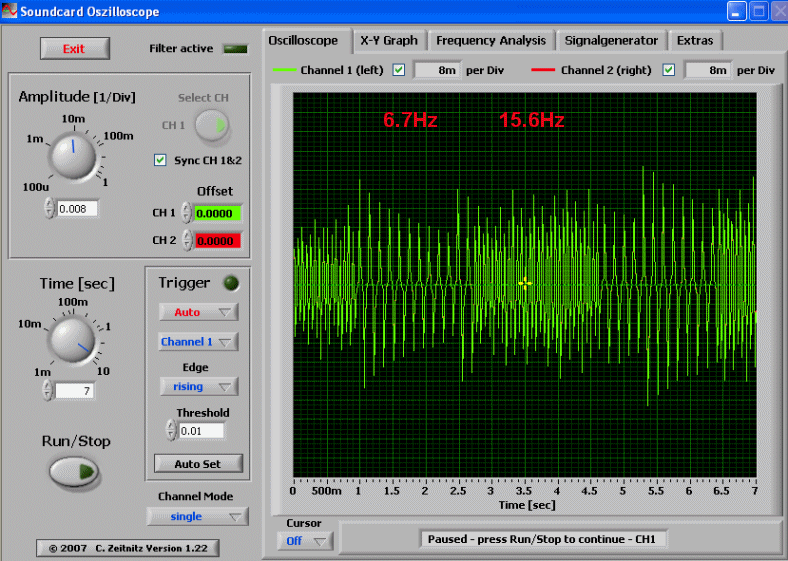
Again, as with other Rofis lights, the "hidden" strobe is an alternating strobe, switching between 6.7Hz and 15.6Hz (spending ~1.5 secs at each frequency). Note the intensity of the pulses also seems to vary over the sequence.
Beacon:
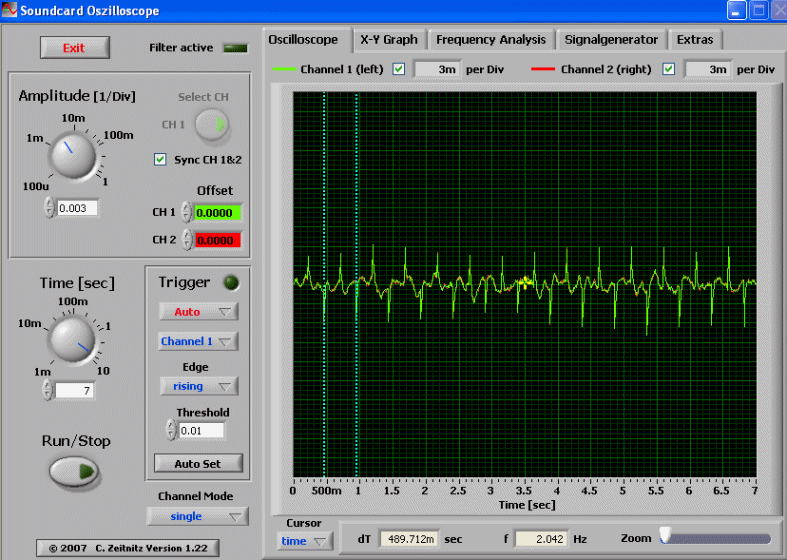
The lower output beacon was at 2Hz, which is perfect for signaling purposes.
No Standby Drain
Because of the physical clicky switch in the tailcap, there is no standby current to worry about.
Beamshots:
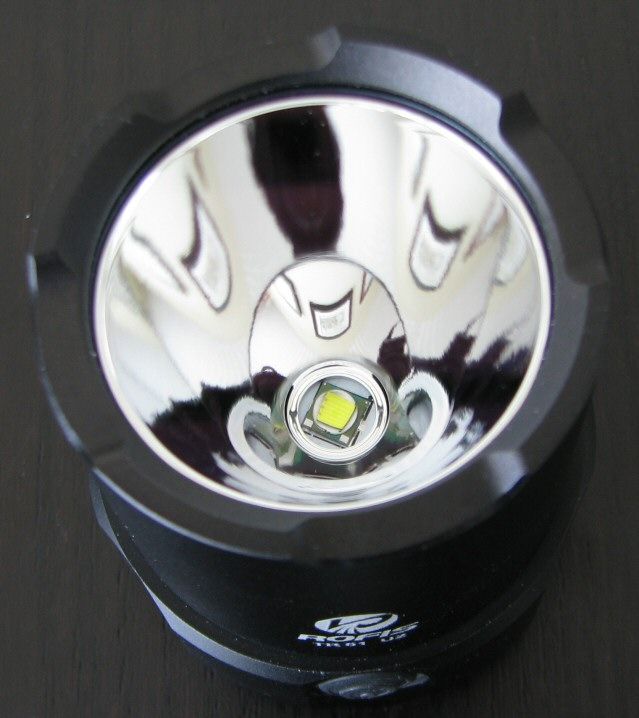
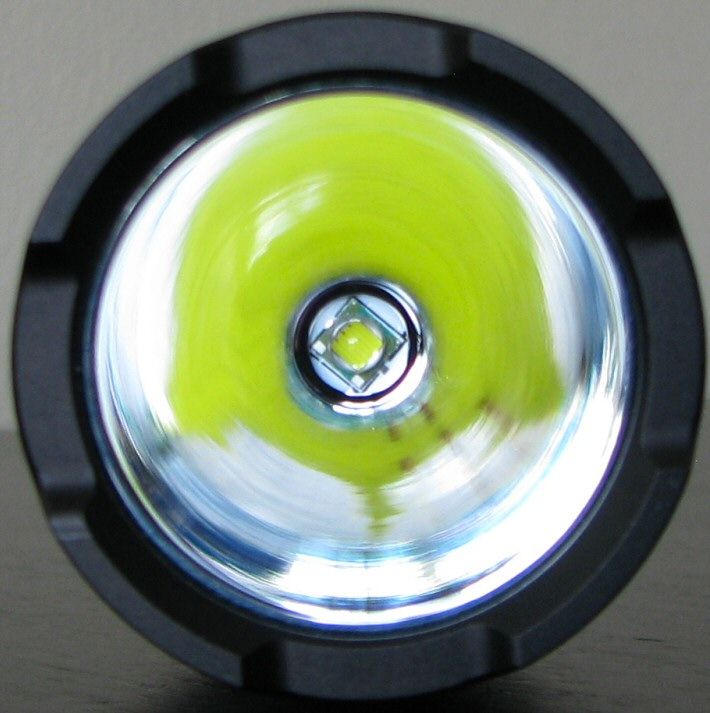
The head of the TR51 is a reasonable size, with a smooth reflector. Throw should be decent for this class of XM-L emitter - which was well centered on my sample (looks like there is a centering disc around it).
And now, what you have all been waiting for. All lights are on their respective max battery sources, about ~0.75 meter from a white wall (with the camera ~1.25 meters back from the wall). Automatic white balance on the camera, to minimize tint differences.
All lights are on their respective max battery sources, about ~0.75 meter from a white wall (with the camera ~1.25 meters back from the wall). Automatic white balance on the camera, to minimize tint differences.
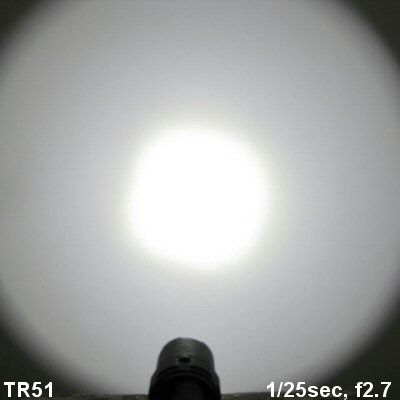
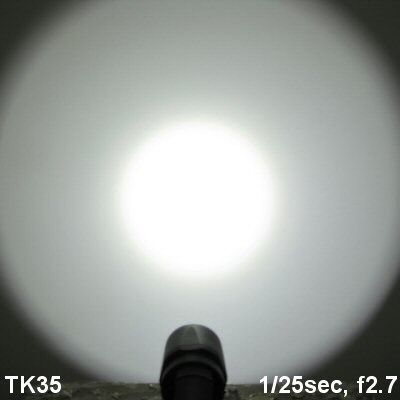
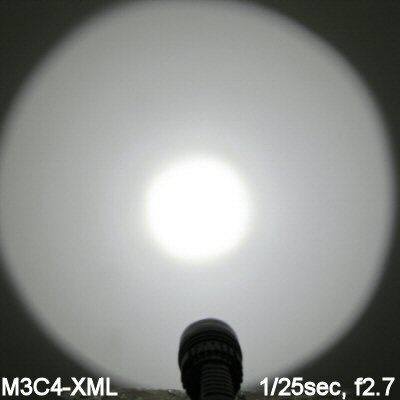
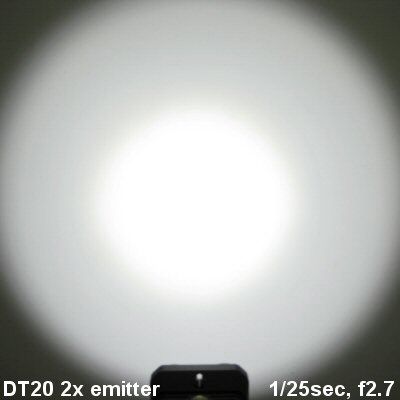
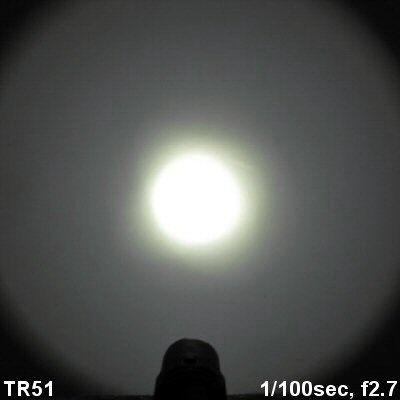
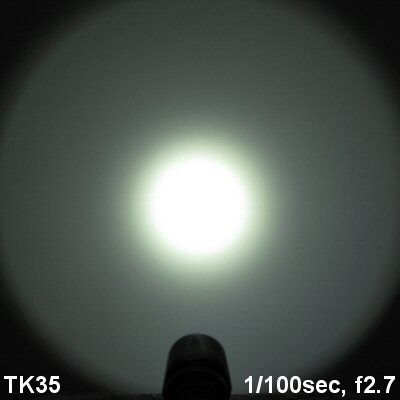
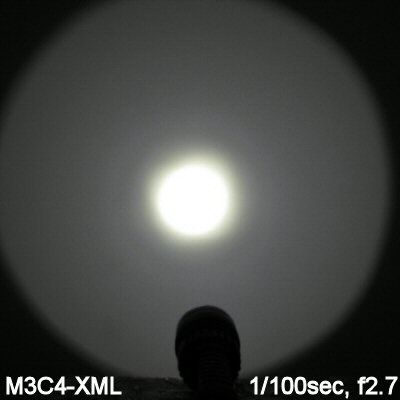
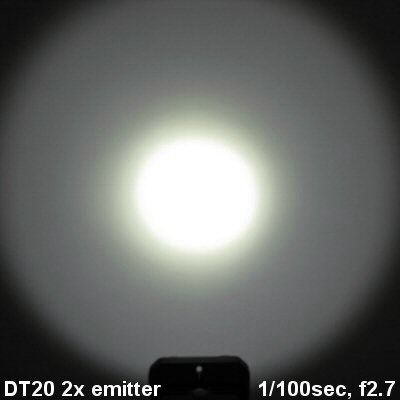
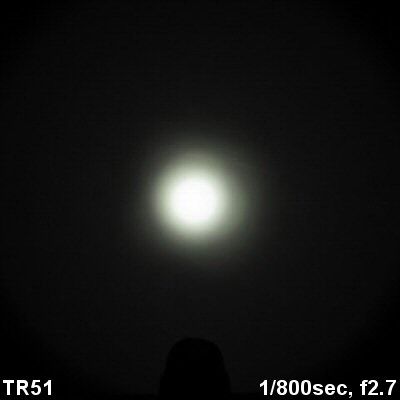
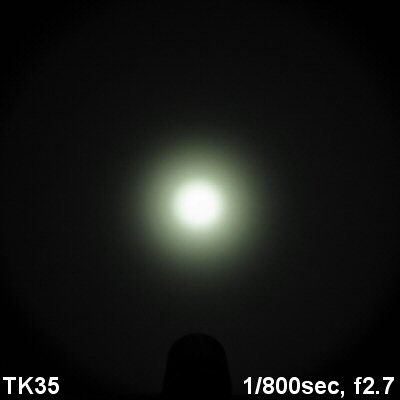
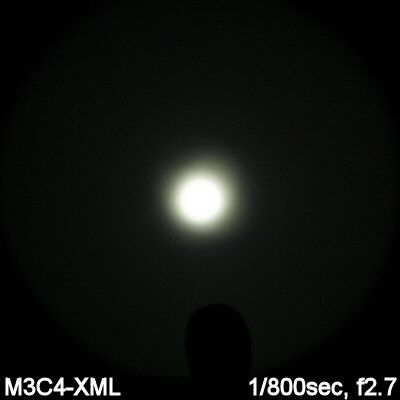
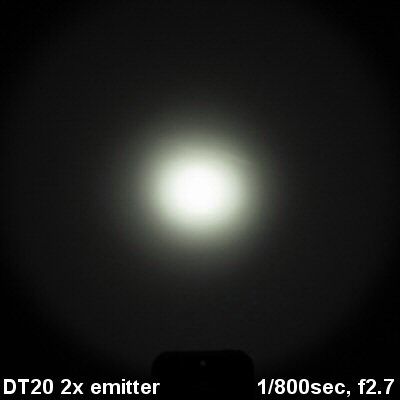
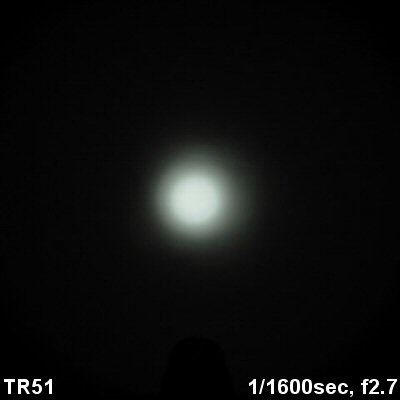
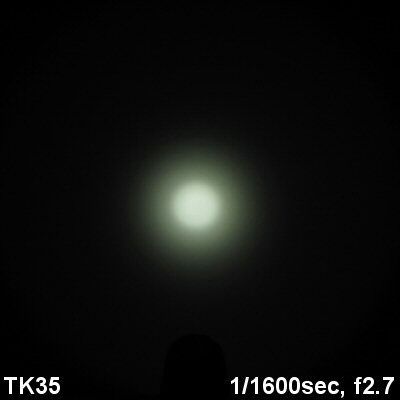
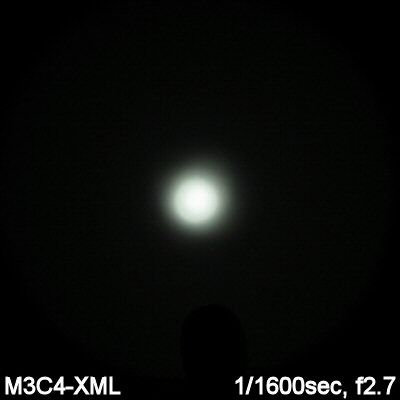
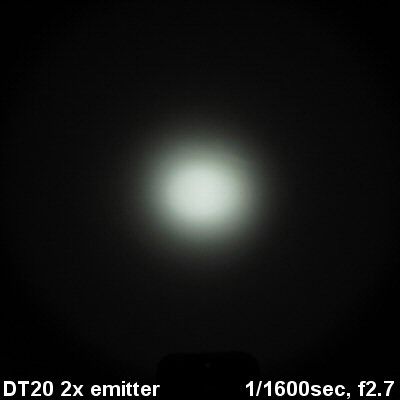
The TR51 does a good job on the beam, with just a few distortions in the corona. As you would expect given the size of the reflector, throw is intermediate to the TK35 and M3C4-XML.
Outdoor beamshots are done in the style of my earlier 100-yard round-up review. Please see that thread for a discussion of the topography (i.e. the road dips in the distance, to better show you the corona in the mid-ground).
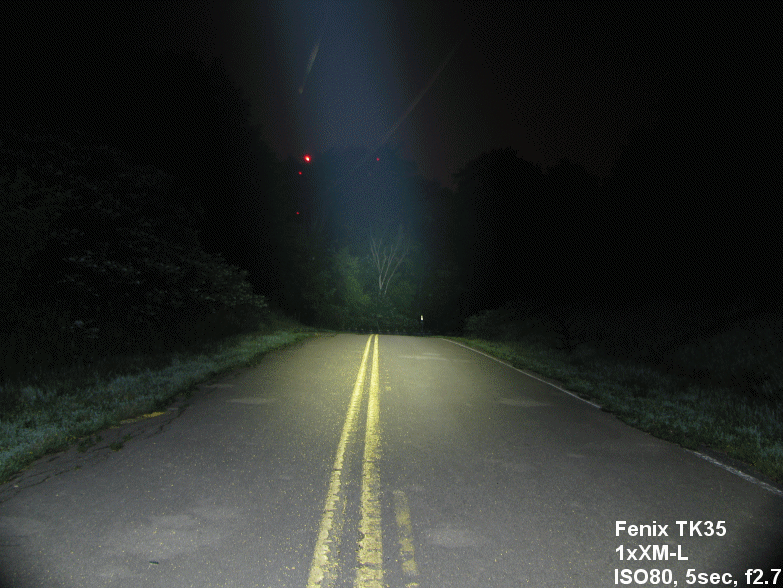
Again, you can see the greater throw of the TR51, compared to my Fenix TK35.
Testing Method:
All my output numbers are relative for my home-made light box setup, a la Quickbeam's flashlightreviews.com method. You can directly compare all my relative output values from different reviews - i.e. an output value of "10" in one graph is the same as "10" in another. All runtimes are done under a cooling fan, except for any extended run Lo/Min modes (i.e. >12 hours) which are done without cooling.
I have devised a method for converting my lightbox relative output values (ROV) to estimated Lumens. See my How to convert Selfbuilt's Lightbox values to Lumens thread for more info.
Throw/Output Summary Chart:
My summary tables are reported in a manner consistent with the ANSI FL-1 standard for flashlight testing. Effective March 2012, I have updated the Max Output ANSI FL-1 lumen estimates to represent peak output measured at 30 secs (my earlier gray tables were based on a later time point for Max output). Please see http://www.flashlightreviews.ca/FL1.htm for a discussion, and a description of all the terms used in these tables.
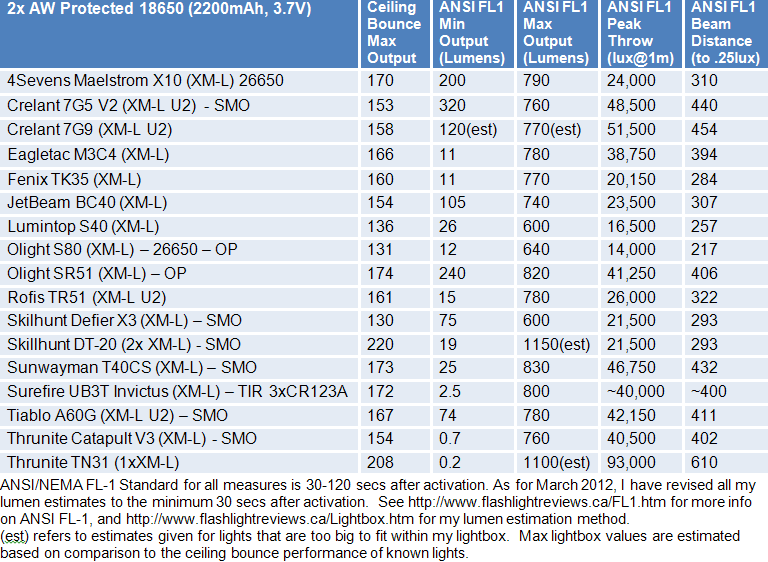
Max output and throw are quite reasonable for this class. The reported ANSI FL-1 output max spec seems a little inflated (i.e., the TR51 is in keeping with my other high-output 2x18650 XM-L lights). But the 31,5000cd peak beam intensity is quite believable (my standard light meter tends to report at the low end of most meters – I have a NIST-calibrated meter on the way, and will update the review when it arrives).
The low mode is also quite reasonable.
Output/Runtime Comparison:
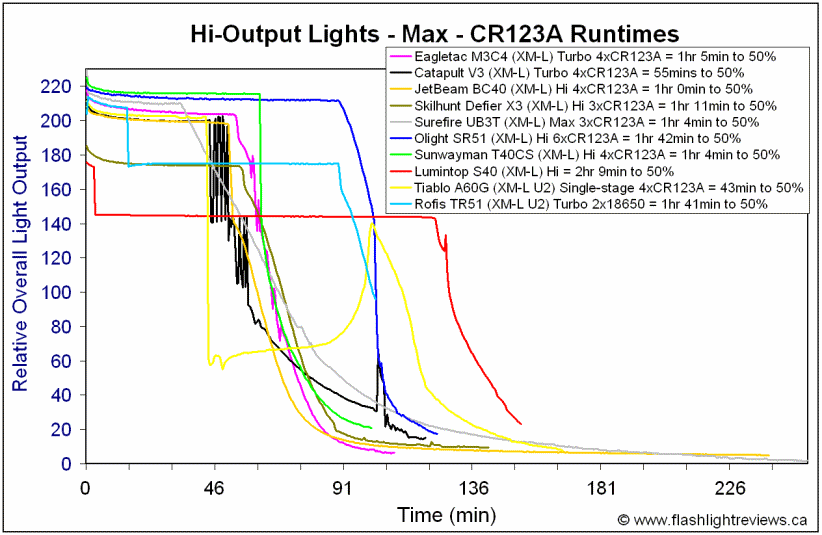
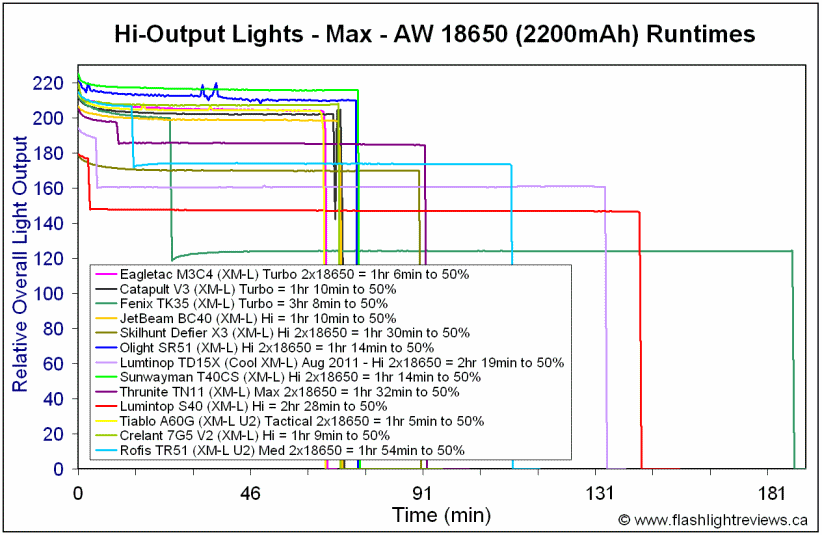
As you can see, there is a step-down in max output that occurs after 14mins on all batteries (appears to be a timed step-down).

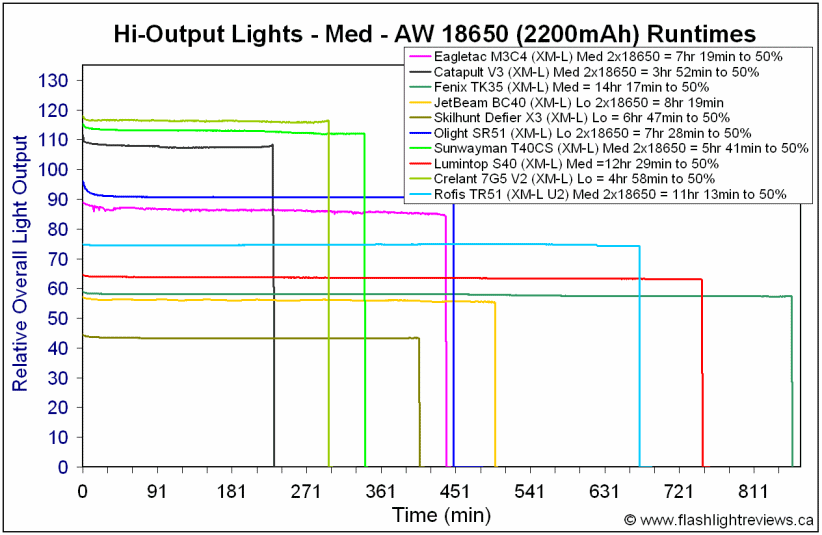
Overall efficiency on Med/Hi seems remarkably comparable to the Fenix TK35 and Eagletac M3C4 – two lights that are known to have good controlled-circuits. :thumbsups:
Potential Issues
While all 18650 button/flat-top styles – and all battery heights – worked in the light, some of the wider high-capacity 18650 cells may not fit in the battery tube holes. For example, all my 4GREER 3100mA cells fit (a bit snug at times), but a number of my XTAR 3100mA cells wouldn't go down.
Ergonomics are good on the light, although grip could be enhanced further with some actual knurling.
The top part of the battery tube is continuous with the battery wells (which is good), but the tailcap is screwed onto the base. Screws seem good quality (hex-head), and were tightly fixed on my sample. But you should keep an eye on them to ensure they don't loosen with time, which could affect waterproofness.
Preliminary Observations
To date, I've been impressed with the innovation, quality construction and excellent circuit performance of the Rofis lights. I'm happy to say the TR51 continues in this tradition.
The TR51 has a distinctive look, even among the other side-by-side style 2x18650 class lights I've reviewed previously. The battery arrangement and head design is definitely novel. The dual switch interface (i.e., physical clicky switch in the tailcap, electronic mode-changing side-switch in the head) is intuitive, and worked well in my testing.
The build feels solid, while maintaining a very compact shape. Unlike a lot of lights, this is one that both Mrs Selfbuilt and I could use comfortably (she finds many of my higher-output lights to too bulky or awkward to hold and use in her petite hands). To quote the old deodorant soap commercial – "manly yes, but I like it too!". :laughing:
I like the fact that there is no battery carrier (solid metal ones add bulk, and plastic ones often feel rather fragile). The only challenge here is that some the wider protected high-capacity cells may not fit down the tubes (an issue for one of my Panasonic 3100mAh NCR18650A-based brands). :shrug:
User interface is good, and I like seeing the blinky modes well hidden. I also like seeing the slow beacon mode – something I find far more useful than "tactical" high-frequency disorienting strobes. :thumbsup:
As with the other Rofis lights I've tested, the regulation pattern and output/runtime efficiency of the current-controlled circuit was excellent. As always, Rofis seems to have remarkably similar circuits to Fenix. I'm glad to see the support for primary CR123As has also been maintained.
I'm glad to see the support for primary CR123As has also been maintained.
Beam pattern is very good for a light this size, with significant throw and spill.
Frankly, I see this light hitting all the major points most people look for in a compact, high-output light. It is very much a goldilocks models – one that I suspect fits "just right" for the needs of many. Definitely a strong contender for this class.
----
TR51 provided by SBFlashlights.com for review.


The TR51 is a new side-by-side style 2x18650, single XM-L U2 flashlight from Rofis. I have tested a number of small pocket lights from Rofis now, and the build quality, UI and circuit performance have generally been comparable to the current-controlled Fenix and Klarus lights. Let's see how this higher output model compares to other lights in this class. :wave:
Manufacturer's Specifications:
- Cree XM-L LED (U2)
- Battery: 4x CR123A / 2x 18650 / 4x 16340 (16340 battery is not recommended)
- Digitally regulated output - maintains constant brightness
- Intelligent memory circuit, automatically memorizes the brightness level when switch off
- Over-charge protection function, when the battery is in low voltage, the light will flicker twice every two minutes
- Reverse polarity protection, to protect from improper battery installation
- Adopts the double-tube design with knurling, comfortable to hold, convenient for operation
- Two mode groups and seven types of output
- Capable of standing up securely on a flat surface to serve as a candle
- Adopts a double-switch design (tail tactical switch, side dimmer switch)
- Made of durable aircraft-grade aluminum
- Premium Type III hard-anodized anti-abrasive finish
- Toughened ultra-clear glass lens with anti-reflective coating
- 152 mm (length) x 45 mm(body width) x 46 mm(head diameter)
- 233-gram weight (excluding batteries)
- Notice: The above-mentioned parameters (tested in lab by using quality CR123A primary Lithium batteries) are approximate and may vary between flashlights, batteries, and environments.
- MSRP: ~$95

The TR51 comes in fairly standard hard cardboard box with magnetic closing flap. Inside you get a fairly typical belt-pouch carrying case, paracord-style wrist lanyard, one extra o-ring, and manual.




From left to right: AW 18650 2200mAh, Rofis TR51, Fenix TK35, Skilhunt DT-20, Eagletac M3C4.
All weights with no batteries installed.
Rofis TR51: Weight: 242.2g, Length: 146.7mm, Width (bezel) 45.9mm, Width (widest part): 48.1mm
Eagletac M3C4 XM-L: Weight: 348.0g, Length: 164mm, Width: 61mm (bezel)
Fenix TK35: Weight 256.1g, Length 162mm, Width (bezel): 48.6mm, Max Width 52.0mm
Skilhunt DT-20: Weight 280.0g, Length: 152mm Width (bezel): 72.8mm and 36.8mm
Sunwayman M40C: Weight: 258.5g, Length 156mm, Width (bezel) 57.1mm,
Nitecore TM11: Weight: 342.6g (476g with 8xCR123A), Length 135.3mm, Width (bezel): 59.5mm







The design of the TR51 is distinctive. Although a number of makers have opted for side-by-side 2x18650 handles (e.g. Fenix TK35, Eagletac M3C4), the TR51 is different from most in that it doesn't use a battery carrier. This allows the light to be more compact than others in this space (and bonus – no carrier to worry about breaking
Anodizing is a black matte finish on my sample, with no chips or damage. Labels are clear and bright against the background. There is no real knurling to speak of on the light, but the various build elements do help with grip (there are also some fine ridges on the battery tube, similar to some Fenix lights). I supposed it could be a bit slippery if wet, but I would still consider grip to be decent overall.
Note that while all the screw threads are anodized, there is still no head lockout. As long as there is sufficient tension on the spring-mounted contact plate in the head, the light will stay on (see below for an explanation of the mechanism). In my testing, the head had to be screwed more than half-way off before the light would turn off. But since there is physical clicky switch in the tail – and no standby mode – there is not much of a concern.
The rear switch is a forward clicky, and the mode-changing side switch on the head is an electronic switch – both with typical feel for these classes.
The interesting part is how the cells connect to the head. You insert the batteries not at the tailcap, but at the opening by the head. Pay close attention to the illustration on how to insert the cells (i.e., one points up, one points down). The batteries remain in series, as on most lights where they are arrange length-wise (or side-by-side in a carrier)
I was originally a little puzzled as to how this light makes contact. I originally presumed the raised metal contacts on either side of the centre piece on the board in the head would make direct contact with the two cells only when they were properly aligned. That would mean that if you unscrewed the head a quarter turn, you would break contact and the light would turn off (i.e., no longer lined up). But that's not the case in practice – with the light on, I can unscrew the head through half a dozen full revolutions, and it never shuts off. :thinking:
The explanation for this is that the spring-mounted contact plate in the head actually rotates – and there is a notch on the body where it locks into place. So as you tighten the head, the plate initially turns in sync with the rest of the head - but at a certain point, it catches the notch and stops turning (relative to the rest of the head). As you continue to tighten the head, the contact plate remains firmly lined up with the cells in the right orientation. This is why you have to loosen the head more than half-way off to break the contact – only then will the plate raise enough to spin freely. Note that you can feel the tension shift when the plate locks/unlocks into position, as you are tightening or loosening the head.
I don't think I've ever seen anything quite like this before. Not that it matters to the end user, and but as a reviewer it is always fun to find something distinctive.
Note that since these contact points are raised on the plate, true flat-top cells will work fine in the light (as well as all button tops, of course). Confirmed with my AW 2600mAh cells.
The light can tailstand.
User Interface
Turn the light on by pressing and releasing the tail forward clicky (press for momentary, click for locked on).
Advance modes by pressing the side electronic switch in the head. Mode sequence is Lo > Med > Hi > Turbo, in repeating sequence.
Light has mode memory, and returns to the last setting after turning off/on.
Press and hold the side switch to active the "hidden" blinky modes. Strobe > SOS > Beacon are available in repeating sequence by clicking the side switch. If you turn the light off/on (or press and hold again), it reverts to its previously memorized constant output modes.
For a more detailed examination of the build and user interface, please see my video overview: :wave:
As always, the video was recorded in 720p, but YouTube typically defaults to 360p. Once the video is running, you can click on the configuration settings icon and select the higher 480p to 720p options. You can also run full-screen.
PWM/Strobe
As with the other Rofis lights I've reviewed, the TR51 appears to be current-controlled at all levels – there was no sign of PWM.
Strobe:

Again, as with other Rofis lights, the "hidden" strobe is an alternating strobe, switching between 6.7Hz and 15.6Hz (spending ~1.5 secs at each frequency). Note the intensity of the pulses also seems to vary over the sequence.
Beacon:
The lower output beacon was at 2Hz, which is perfect for signaling purposes.
No Standby Drain
Because of the physical clicky switch in the tailcap, there is no standby current to worry about.
Beamshots:


The head of the TR51 is a reasonable size, with a smooth reflector. Throw should be decent for this class of XM-L emitter - which was well centered on my sample (looks like there is a centering disc around it).
And now, what you have all been waiting for.
















The TR51 does a good job on the beam, with just a few distortions in the corona. As you would expect given the size of the reflector, throw is intermediate to the TK35 and M3C4-XML.
Outdoor beamshots are done in the style of my earlier 100-yard round-up review. Please see that thread for a discussion of the topography (i.e. the road dips in the distance, to better show you the corona in the mid-ground).

Again, you can see the greater throw of the TR51, compared to my Fenix TK35.
Testing Method:
All my output numbers are relative for my home-made light box setup, a la Quickbeam's flashlightreviews.com method. You can directly compare all my relative output values from different reviews - i.e. an output value of "10" in one graph is the same as "10" in another. All runtimes are done under a cooling fan, except for any extended run Lo/Min modes (i.e. >12 hours) which are done without cooling.
I have devised a method for converting my lightbox relative output values (ROV) to estimated Lumens. See my How to convert Selfbuilt's Lightbox values to Lumens thread for more info.
Throw/Output Summary Chart:
My summary tables are reported in a manner consistent with the ANSI FL-1 standard for flashlight testing. Effective March 2012, I have updated the Max Output ANSI FL-1 lumen estimates to represent peak output measured at 30 secs (my earlier gray tables were based on a later time point for Max output). Please see http://www.flashlightreviews.ca/FL1.htm for a discussion, and a description of all the terms used in these tables.

Max output and throw are quite reasonable for this class. The reported ANSI FL-1 output max spec seems a little inflated (i.e., the TR51 is in keeping with my other high-output 2x18650 XM-L lights). But the 31,5000cd peak beam intensity is quite believable (my standard light meter tends to report at the low end of most meters – I have a NIST-calibrated meter on the way, and will update the review when it arrives).
The low mode is also quite reasonable.
Output/Runtime Comparison:


As you can see, there is a step-down in max output that occurs after 14mins on all batteries (appears to be a timed step-down).


Overall efficiency on Med/Hi seems remarkably comparable to the Fenix TK35 and Eagletac M3C4 – two lights that are known to have good controlled-circuits. :thumbsups:
Potential Issues
While all 18650 button/flat-top styles – and all battery heights – worked in the light, some of the wider high-capacity 18650 cells may not fit in the battery tube holes. For example, all my 4GREER 3100mA cells fit (a bit snug at times), but a number of my XTAR 3100mA cells wouldn't go down.
Ergonomics are good on the light, although grip could be enhanced further with some actual knurling.
The top part of the battery tube is continuous with the battery wells (which is good), but the tailcap is screwed onto the base. Screws seem good quality (hex-head), and were tightly fixed on my sample. But you should keep an eye on them to ensure they don't loosen with time, which could affect waterproofness.
Preliminary Observations
To date, I've been impressed with the innovation, quality construction and excellent circuit performance of the Rofis lights. I'm happy to say the TR51 continues in this tradition.
The TR51 has a distinctive look, even among the other side-by-side style 2x18650 class lights I've reviewed previously. The battery arrangement and head design is definitely novel. The dual switch interface (i.e., physical clicky switch in the tailcap, electronic mode-changing side-switch in the head) is intuitive, and worked well in my testing.
The build feels solid, while maintaining a very compact shape. Unlike a lot of lights, this is one that both Mrs Selfbuilt and I could use comfortably (she finds many of my higher-output lights to too bulky or awkward to hold and use in her petite hands). To quote the old deodorant soap commercial – "manly yes, but I like it too!". :laughing:
I like the fact that there is no battery carrier (solid metal ones add bulk, and plastic ones often feel rather fragile). The only challenge here is that some the wider protected high-capacity cells may not fit down the tubes (an issue for one of my Panasonic 3100mAh NCR18650A-based brands). :shrug:
User interface is good, and I like seeing the blinky modes well hidden. I also like seeing the slow beacon mode – something I find far more useful than "tactical" high-frequency disorienting strobes. :thumbsup:
As with the other Rofis lights I've tested, the regulation pattern and output/runtime efficiency of the current-controlled circuit was excellent. As always, Rofis seems to have remarkably similar circuits to Fenix.
 I'm glad to see the support for primary CR123As has also been maintained.
I'm glad to see the support for primary CR123As has also been maintained.Beam pattern is very good for a light this size, with significant throw and spill.
Frankly, I see this light hitting all the major points most people look for in a compact, high-output light. It is very much a goldilocks models – one that I suspect fits "just right" for the needs of many. Definitely a strong contender for this class.
----
TR51 provided by SBFlashlights.com for review.
Last edited:


